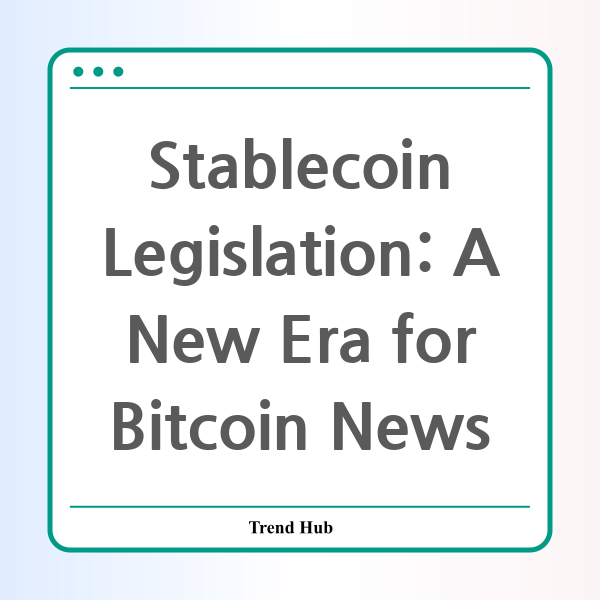* This website participates in the Amazon Affiliate Program and earns from qualifying purchases.

As the landscape of cryptocurrency continues to evolve, the recent announcements from the White House concerning stablecoin legislation indicate a significant shift in the regulatory climate for digital assets. With growing interest in stablecoins, particularly from overseas markets, the U.S. is now poised to establish a clear regulatory framework that could bolster innovation and strengthen the dollar's standing in the digital finance arena.
David Sacks, the newly appointed White House AI and crypto czar, has articulated the administration's commitment to advancing legislation over the next six months. This ambitious timeline comes as lawmakers rally to support a stablecoin bill introduced by Senator Bill Hagerty. The push for this legislation is not only timely but essential, given that stablecoins—digital currencies pegged to real-world assets such as the U.S. dollar—are becoming increasingly popular among investors and consumers worldwide.
During a recent press conference, Sacks reiterated the administration's goals: "They are very committed to moving legislation through the House and the Senate this year in order to provide that clear regulatory framework that the digital assets ecosystem needs to sustain innovation in the United States." This statement sets a tone of optimism and urgency as the administration navigates the complexities of digital asset regulation.
The proposed framework is designed to facilitate U.S.-based stablecoin issuance, which supporters believe could potentially inject trillions of dollars into the economy by enhancing the dollar's dominance in global markets. As Sacks noted, this move could not only increase demand for the dollar but also lead to lower long-term interest rates, benefiting consumers and businesses alike.
Furthermore, another pivotal agenda item for Sacks is the feasibility of establishing a digital asset reserve—potentially a Bitcoin reserve. While details on this concept remain preliminary, it demonstrates the administration's intention to look beyond mere regulation and explore innovative financial strategies that could redefine how digital assets are integrated into the U.S. economy.
In tandem with legislative efforts, the Securities and Exchange Commission (SEC) has announced a new approach to crypto regulation under the leadership of Commissioner Hester Peirce. The SEC is now welcoming dialogue with industry stakeholders to ensure that regulatory measures are both effective and conducive to growth. Peirce's focus on creating transparent and predictable regulations is a significant departure from previous practices and could provide the stability that investors and innovators need moving forward.
As the crypto landscape is often fraught with uncertainty, the SEC's commitment to examining key areas such as crypto lending, staking, and compliance is particularly noteworthy. These initiatives will help clarify which crypto assets fall under existing securities laws and offer pathways for token issuers to achieve regulatory compliance without stifling innovation.
Today's discussions in Washington represent a critical inflection point for the future of cryptocurrency and stablecoins in particular. The collaborative efforts between the White House, lawmakers, and regulatory bodies signify a concerted move toward a more structured and supportive environment for digital finance.
In conclusion, as legislation surrounding stablecoins and broader crypto regulation gains momentum, it is clear that the U.S. is on a trajectory to embrace digital assets like never before. For investors, businesses, and everyday users, the coming months could herald a new golden age in digital finance, characterized by clarity, innovation, and growth.
* This website participates in the Amazon Affiliate Program and earns from qualifying purchases.